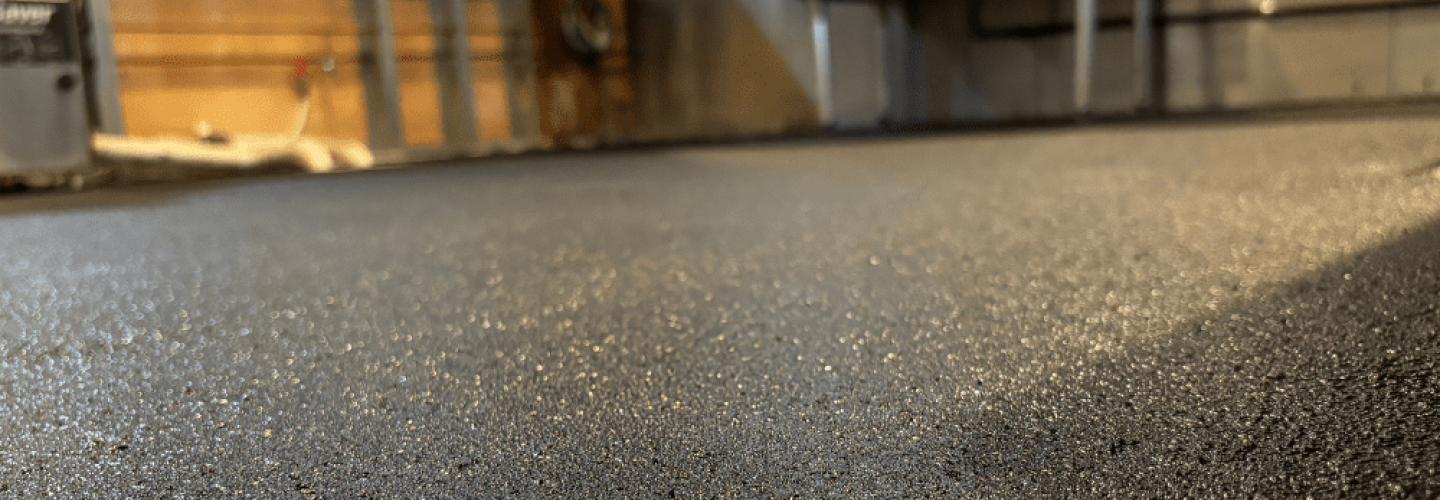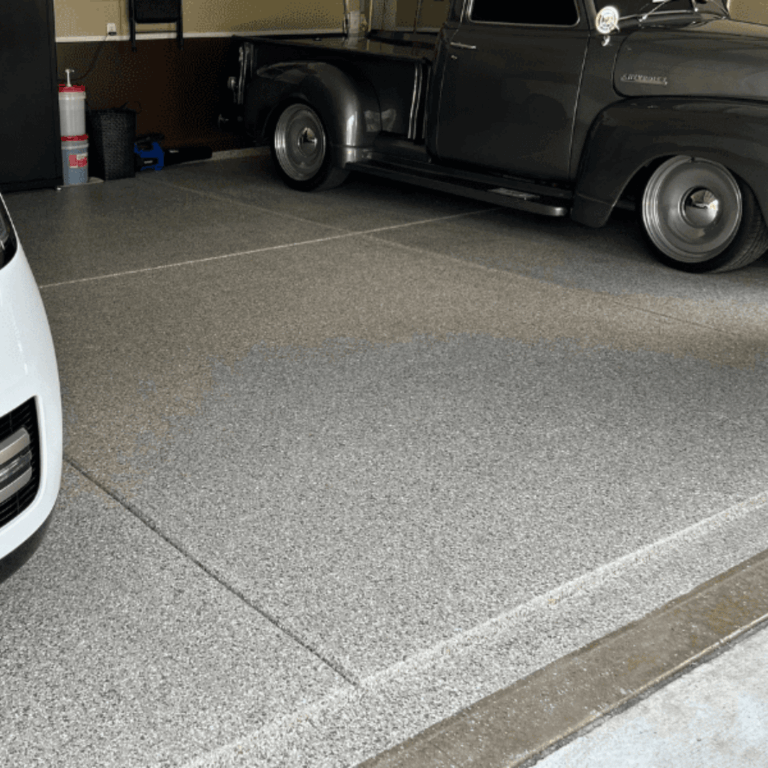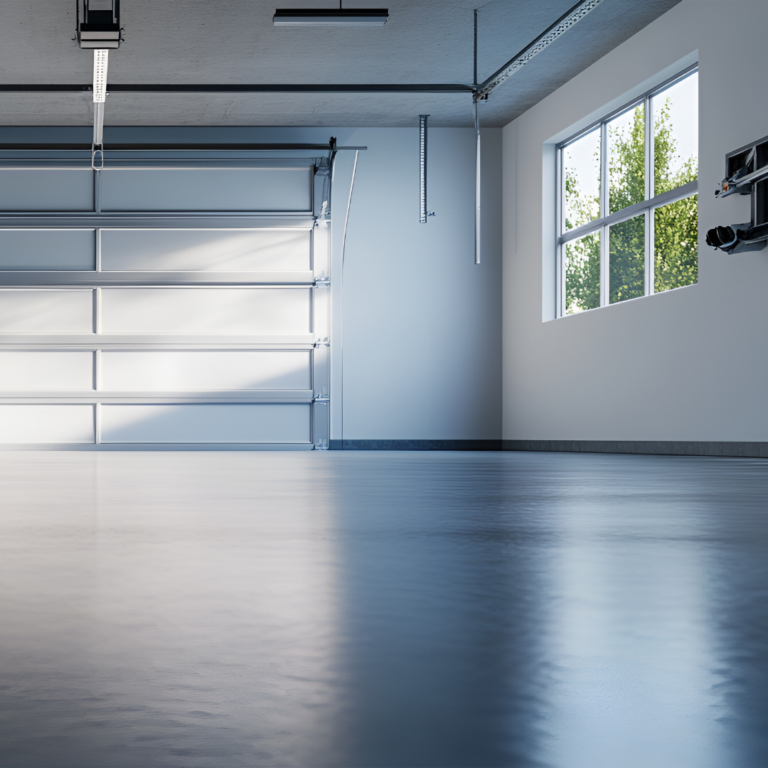Thinking about giving your garage a fresh new look? You’re not the only one. Every month, plenty of homeowners search for epoxy floor coating near me, hoping to make their garage floors tougher and better looking. But with so many products, opinions, and advice out there, it can get overwhelming.
Let’s keep it simple. Whether you’re just starting to explore garage floor coating options or wondering what the deal is with polyaspartic floors, this guide answers the five questions we hear most and clears up the common mistakes people make when choosing an epoxy garage floor.
At Rocket City Epoxy, we’ve helped homeowners turn their garages into clean, durable, and great-looking spaces that stand up to real life. If you’re thinking about making a change, we’re here to help you get it done right.
Epoxy and Polyaspartic Floors: What’s the Difference?
You’ve probably come across two main options: epoxy and polyaspartic. Both are popular, both are strong, and both look great when installed correctly. But they’re not the same, and knowing the difference can help you make a smarter choice for your garage.
Epoxy floors have been around for decades. They’re made by mixing two parts (a resin and a hardener) that bond to your concrete and form a tough, durable surface. Epoxy is a solid choice for indoor spaces like garages or basements, especially if they don’t get a lot of direct sunlight.
Polyaspartic floors are a newer option, and they come with a few extra perks. They cure much faster, often in just one day, and they’re highly resistant to sunlight, so they won’t yellow or fade. They also flex a little more than epoxy, which helps them hold up better in areas where the concrete might expand and contract with temperature changes.
Here’s a quick and simple breakdown:
- Epoxy takes longer to cure, but it’s reliable and budget-friendly.
- Polyaspartic cures fast, handles heat and UV rays better, and tends to last longer in high-use areas.
- Both are strong, but polyaspartic coatings offer more flexibility and better resistance to fading.
- Epoxy is great for most garages. Polyaspartic is ideal if you want quicker results or your space gets a lot of sun.
Still not sure which is right for you? We’re happy to walk you through the pros and cons based on your space and how you use it.

FAQ #1: How Long Is This Floor Actually Going to Last?
This is one of the first things people ask, and it makes sense. If you’re putting time and money into your garage floor, you want it to last.
Epoxy and Polyaspartic Floors Are Built to Last
Both epoxy and polyaspartic garage floors are tough. When installed properly, they can last 10 to 20 years or more. That’s years of easy cleaning, no stains, and no peeling.
What Affects the Lifespan?
A few key things can make a big difference in how long your floor holds up:
- Surface prep matters: If the floor isn’t cleaned and prepped the right way, the coating won’t bond well. We use commercial-grade grinders to get the concrete ready before we apply anything.
- Material quality: Not all coatings are the same. We stick with professional-grade products that can handle heat, tires, oil, and daily use.
- How you use your space: Light use like parking or storage means less wear. But even if you’re using it as a gym or workshop, a properly installed floor will still perform great.
FAQ #2: Is Polyaspartic Really Worth the Extra Cost?
It’s a question we hear a lot—especially from folks comparing it to traditional epoxy. Polyaspartic might cost a little more upfront, but many homeowners find the long-term benefits are worth every penny.
What Makes Polyaspartic Different?
Polyaspartic coatings are a newer, more advanced option compared to epoxy. They cure much faster, resist UV rays better, and hold up incredibly well under stress. That makes them especially great for busy garages or spaces exposed to a lot of sunlight.
Here’s why many people choose polyaspartic:
- Fast turnaround: You can walk or park on it in as little as one day.
- UV resistance: It won’t yellow or fade, even if your garage gets a lot of sun.
- Stronger durability: It resists scratches, chemicals, oil spills, and heat better than traditional epoxy.
- More flexibility: It adapts better to temperature changes and concrete movement.
Is It Worth It for Every Garage?
Not always. If your garage is shaded and only gets light use, epoxy might do the job just fine. But if you want a fast, long-lasting solution with minimal maintenance, polyaspartic is a solid investment.
FAQ #3: Are These Floors Slippery?
This is a common concern, and it’s a good one. After all, the last thing you want is to step into your garage after a rainstorm and feel like you’re on ice.
Smooth Does Not Mean Slippery
Epoxy and polyaspartic floors do have a smooth finish, but that doesn’t automatically mean they’re slick. In fact, the level of slip resistance depends on how the coating is applied and what kind of finish you choose.
We Can Add Grip Where You Need It
If you’re worried about safety, especially with kids, pets, or heavy foot traffic, we have options:
- Textured flakes: These add traction and visual appeal.
- Anti-slip additives: We can mix in fine grip material with the topcoat.
- Custom finishes: You can choose a surface that balances smoothness with extra grip.
These options are especially helpful for garages that double as workshops, gyms, or entryways.
FAQ #4: What’s the Installation Process Like?
If you’ve never had a garage floor coated before, you might be wondering what actually happens during the install. The good news is that it’s often quicker and cleaner than people expect.
Here’s What You Can Expect From Start to Finish
When you work with us, we handle the whole process from prep to finish. Here’s a simple breakdown of how it works:
- Surface prep: We start by grinding the concrete. This removes any old coatings, stains, or debris and opens the surface so the new coating bonds properly.
- Crack and joint repair: Next, we repair cracks, chips, and other flaws to give you a smooth, solid foundation.
- Base coat application: We apply a high-quality base coat of either epoxy or polyaspartic, depending on what fits your space best.
- Design or flake layer: If you’ve chosen color flakes or a decorative look, we add that here.
- Topcoat sealing: We finish with a clear protective topcoat to lock in durability, shine, and resistance.

FAQ #5: Can I Just Do This Myself?
We get this question a lot. DIY epoxy kits are easy to find at hardware stores, and the idea of saving money is tempting. But there’s a big difference between a weekend project and a professional result.
What DIY Kits Don’t Tell You
Most store-bought kits make it look simple. But without the right surface prep, materials, and tools, the results often don’t last.
Common problems include:
- Peeling or bubbling because the floor wasn’t prepped properly
- Uneven coating that looks blotchy or thin
- No UV protection, which means the floor can yellow or fade over time
- Poor durability, especially under cars, tools, or temperature changes
Even with careful effort, DIY jobs rarely match the quality or lifespan of a professionally installed floor.
What You Get With Professional Installation
When you hire a professional, you’re not just paying for materials.
You’re paying for:
- Proper concrete prep with industrial equipment
- Repairs that make the surface smooth and ready
- High-quality coatings designed for long-term performance
- A clean, consistent finish that looks great and holds up
It’s a one-time job done right, so you don’t have to redo it later.
Where Epoxy Floors Work Best
Epoxy floor coatings aren’t just for car enthusiasts or fancy garages. They’re a solid choice for any space where you want a surface that’s easier to clean, more durable, and just looks better than bare concrete.
Great places for epoxy flooring:
- Residential garages: A clean, smooth surface makes the whole space feel more finished.
- Basements: Epoxy helps control dust and moisture while adding a polished look.
- Workshops: The tough surface holds up to tools, spills, and heavy use.
- Utility rooms: It’s easy to mop and doesn’t trap dirt like unfinished concrete.
- Storage areas: Epoxy makes these spaces brighter and easier to organize.
If you’re tired of concrete that’s stained, dusty, or full of small cracks, epoxy can give the space a clean, long-lasting upgrade without a full renovation.
When’s the Right Time to Install Epoxy Flooring?
There’s no perfect season, but some times do make things easier. The best time to install epoxy floors is when your garage or workspace is dry, clean, and not packed full of stuff. If you’re already clearing out clutter or doing repairs, it’s a great time to add a floor that pulls everything together.
Good times to plan your install:
- After moving into a new home
- While reorganizing or renovating the garage
- Before adding storage systems or shelving
- When your concrete floor starts looking worn, stained, or damaged
Epoxy is a great finishing touch. Once it’s down, your space looks brighter, feels cleaner, and works better for everyday life.
Why Epoxy Floors Make Sense for North Alabama Homes
If you live around Huntsville, Madison, or anywhere in North Alabama, you know how tough our weather can be on concrete. Humidity, heat, and temperature swings can cause cracks, stains, and dust that never seems to go away.
That’s why epoxy flooring is such a smart upgrade here. It helps protect your garage or basement from all the things that wear down plain concrete—moisture, oil, grime, and everyday use. Plus, it makes your space feel cleaner, brighter, and easier to use year-round.

Trusted Epoxy Flooring Experts for Your Garage
Rocket City Epoxy knows what it takes to deliver clean, durable, and long-lasting garage floors that truly hold up. Our focus is on doing the job right from the ground up, starting with proper surface prep and using only high-quality epoxy materials.
We don’t just apply a coating and move on. Every project begins with careful grinding and repair work to make sure the concrete is ready. Then we apply a multi-layer system that’s built to resist stains, wear, and daily use.
From clear communication to detailed craftsmanship, we make the entire process simple and stress-free. Whether you want a clean, modern finish or a custom flake design, we’ll help you choose the best fit for your space.
More Helpful Info Before You Decide
Even after the big questions are answered, people still have a few “what about…” moments when it comes to epoxy floors. So here are some extra questions we hear often, along with simple answers.
1) Can I use epoxy in places besides the garage?
- Yes. Epoxy works great in basements, workshops, laundry rooms, storage spaces, and even some kitchens. As long as there’s a solid concrete surface, epoxy can make it more durable, cleaner, and better looking.
2) How do I clean it?
- Just sweep or vacuum as needed, and mop it occasionally with a mild cleaner. Epoxy resists stains and doesn’t trap dirt or dust, so it’s easy to maintain.
3) Will it smell during installation?
- There may be a light odor while the epoxy is being applied, but it fades quickly. We use high-quality materials that are safe once cured.
4) Does epoxy make the floor slippery?
- It can, depending on the finish. We can add textured flakes or anti-slip additives if you’re concerned about traction. You’ll still get a clean, polished look—just safer underfoot.
5) What happens if the floor gets scratched or chipped?
- Epoxy is tough, but like anything, it can get damaged with heavy impact. The good news is small chips or scratches can usually be repaired without redoing the whole floor.
6) Can you coat over old patching or previous coatings?
- Usually, yes. We test adhesion, mechanically grind to a clean profile, remove weak patches, and repair cracks and spalls with compatible materials. Honest evaluation is critical. If something will not last under a new system, we remove it and rebuild the area first.
7) Can I choose the color or look?
- Absolutely. We offer a wide range of colors, flake blends, and finishes so your floor doesn’t just perform well—it matches your style too.
8) Is it safe for kids and pets?
Yes. Once it’s cured, epoxy is safe for everyone. It also helps reduce dust and allergens, which can make your garage or basement a healthier space.
A Smart Upgrade for Everyday Spaces
A clean, sealed epoxy floor can turn any garage or basement into a more usable part of your home. No more fighting dust, scrubbing stains, or dealing with cracked concrete. Just a floor that looks great, lasts long, and works for your lifestyle.
Whether you’re parking cars, building projects, working out, or just keeping things organized, epoxy helps make the space easier to use and easier to enjoy.
Let’s Talk About Your Garage Floor
Every concrete floor tells a story. Maybe yours has a few stains, some wear, or even a few cracks starting to show. That’s normal. Concrete moves over time, and the real solution isn’t to fight it but to work with it by repairing it the right way and protecting it with a floor coating that’s built to last.
Whether you’re interested in the durability of epoxy, the fast return to use of polyaspartic, or just want your garage to feel cleaner and more usable, we’re here to make sure it’s done right. We don’t take shortcuts. We prep the surface properly, use high-quality materials, and guide you through every step so you know exactly what to expect.
The goal is simple: to give you a floor that looks great on day one and keeps working for you for years to come.
When you’re ready to explore what’s possible for your space, feel free to get in touch with us!
Whether your concrete is brand new or has seen better days, we’ll take the time to do it right from the start and make sure the result truly works for you.

